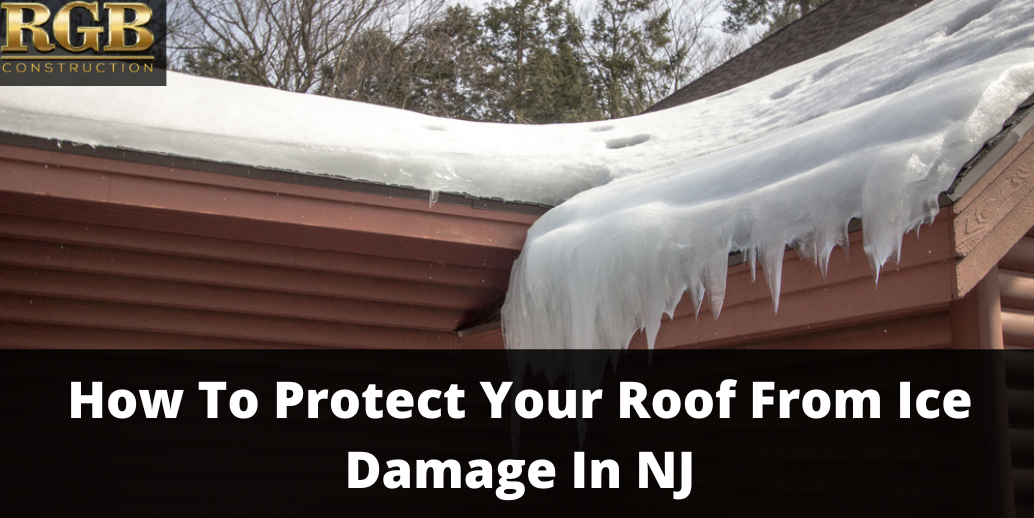Your roof ranks as one of the most important investments that you will make in a home. When the roof leaks, you may need to fork over thousands of dollars in repairs for damages. One of the biggest dangers to your home in the winter comes from ice damage. Most commonly, the damage happens when the ice builds into dams on the roof that can back up water under the shingles. Standing water on the roof becomes a huge problem. Here’s how to protect the roof from ice damage.
Keep the Eaves and the Ridge of the Roof Ventilated
Proper roof ventilation lets the airflow in and out of the attic to prevent overheating and moisture. Moisture in the roof’s interior will rot the wood and can warp and bend the roof. This damage can spread to the other parts underneath the roof.
To paint a picture of the havoc that ice dams can unleash, they made up the second-largest share of homeowner’s insurance claims. The average claim from this damage would cost $5,531. The ventilation limits the snowmelt. At the same time, it maintains a consistent temperature between the indoors and the outdoors to prevent condensation.
Proper ventilation alone will do much to stop ice dams. You can spot an ice dam because the icicles will hang from the roof. As they hang from the roof, it damages the shingles. Check the soffit vents to see that they remain fully open. You must leave them open and beware of putting anything up against the vents that might block them.
Install Better Insulation in the Attic
You will see big savings on your heating bill in the winter months if you install better insulation. One study found that homeowners saved a national average of 15 percent on their heating bills with new insulation. Much of the heat that happens on the roof in the winter is simply that which escapes through the roof. You can hire roofers in NJ to install it since going up on the roof yourself poses a danger.
How does better insulation prevent ice dams? When the heat escapes through the roof, it melts the snow and pools the water on the roof forming ice dams. Sealing the parts of the home with heat loss can prevent ice dams. The other weak areas include the cracks and gaps around the drywall, the pipes, and the light fixtures.
Put in an Attic Fan
Attic fans improve the ventilation in the home to reduce the risk of ice dams. Believe it or not, the attic fan will work as well in the winter. Now, an attic fan won’t stop ice dams by itself, but it can help to prevent them through better ventilation since poor attic ventilation is one of the biggest factors in ice dams.
Clean the Gutters
Clogged rain gutters increase your risk of ice dams on the roof because the water pools on the roof and remains there. You want the water to leave the roof as quickly as possible to keep it from penetrating the shingles. Clogged gutters on their own won’t cause an ice dam, but they can worsen the problem. To deal with the issue, clean the gutters every autumn before winter strikes.
Exhaust Ducts Go Outside
Never let the exhaust ducts from the kitchen, bathroom, or dryer leave through the soffit vents. They should always exit through the roof or the walls. When the exhaust leaves through the soffits, it can interrupt the airflow to directly create ice dams. If you have ice dams on your roof, check to see that your exhaust ducts exit through the proper channels. You can hire an NJ roofing contractor to help with this work.
Add Flashing Around the Chimney
The chimney ranks as one of the weakest points on the roof, and ice dams can unleash particular damage to the chimney by pulling up the flashing. This damage will cause cracks in the roofing material to start a leak. You need proper insulation at this point as well because of how it can melt the snow to cause ice dams.
Check to see that you sealed off this space around the chimney. The flashing does this job by sealing the home around this area and preventing water from entering the home.
Treat Ice Dams as a Symptom of a Bigger Problem
You must treat the underlying cause of the ice dam forming if you wish to eradicate it over the long term. You can tell that you need to take action when you see icicles hanging from your roof. The icicles hanging from the roof are referred to as an ice dam, and they can damage your drywall, wall studs, or ceiling joists. The actual ice dam happens closer to the edge of the roof where the water pools. Most often, this happens when the snow melts and refreezes.
Final Thoughts
If you see an ice dam forming on your home, call RGB Construction for further assistance. We’re a veteran-owned and operated business committed to workmanship, integrity, and timeliness. Ice dams on the roof require action as soon as possible to prevent damage. You want it off the roof as soon as possible because the longer it sits, the greater its chances of water penetrating your roof. To learn more, call us at 856-264-9093.







